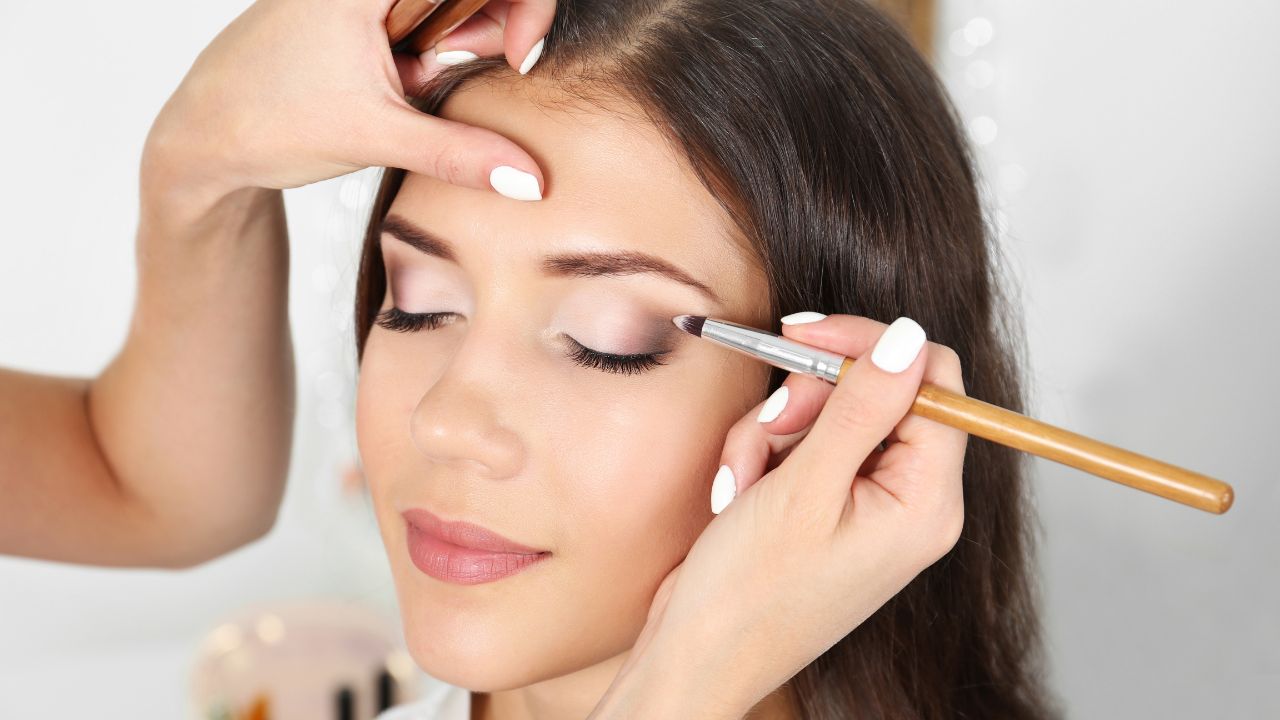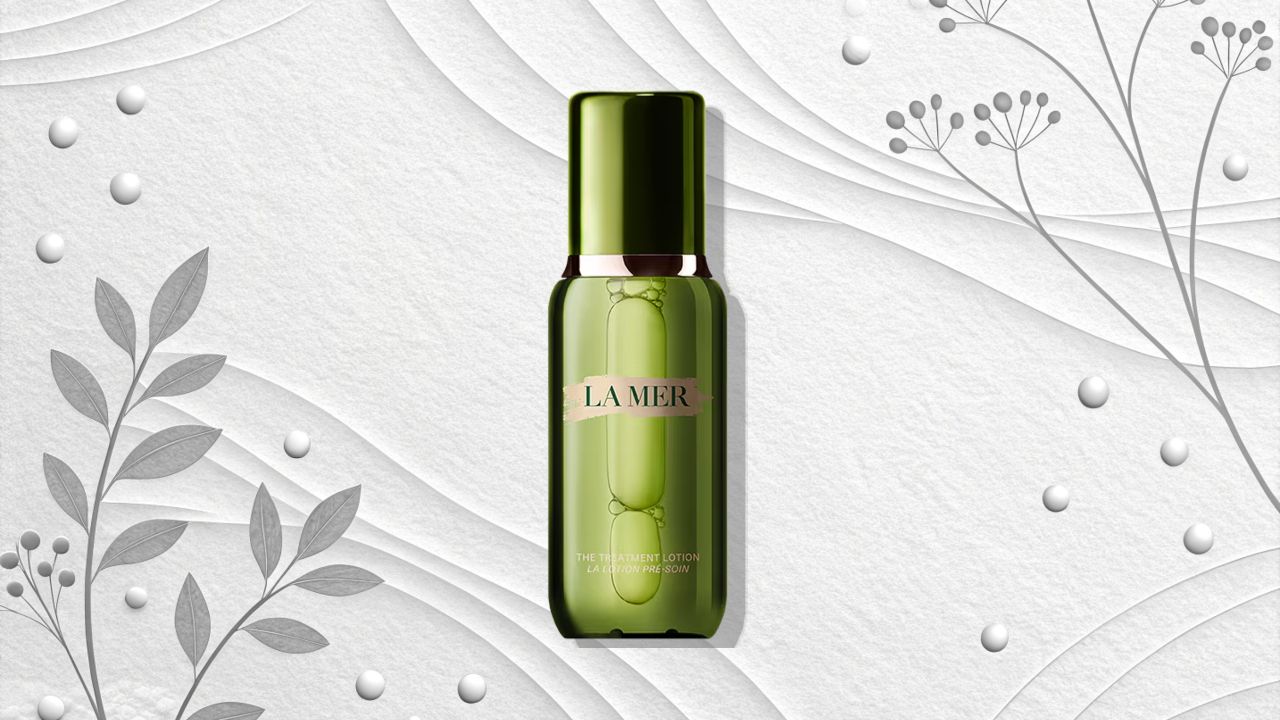Blog
Home / Origins & History of Perfume / Why Certain Smells Bring Back Memories: The Proust Effect Explained (2025)
Categories
Recent Posts
- Why Certain Smells Bring Back Memories: The Proust Effect Explained (2025)
- How Perfumes Can Change Your Mood: The Science Behind Scent and Emotions
- Best Affordable Perfumes of 2025: Budget Fragrances That Smell Expensive
- Luxury Beauty Gifts to Grab on Black Friday 2025: The Ultimate Guide to Premium Beauty Deals
- Which Day Has the Best Beauty Deals? Your Complete Guide to Shopping Smart in 2025
Why Certain Smells Bring Back Memories: The Proust Effect Explained (2025)
0

The scent of fresh-cut grass transported me instantly to summer afternoons at my grandfather’s farm. I was standing in a city park, yet suddenly I could feel the warmth of the sun on my seven-year-old shoulders, hear the distant hum of his lawnmower, and taste the cold lemonade my grandmother would bring us. The memory was so vivid, so emotional, that tears welled up in my eyes.
If you’ve ever experienced something similar—a whiff of perfume that reminds you of your mother, the smell of crayons that takes you back to kindergarten, or fresh cookies that conjure your childhood kitchen—you’ve experienced one of neuroscience’s most fascinating phenomena.
But why do certain smells bring back memories with such incredible vividness and emotional power? Why can a single scent unlock memories you thought were long forgotten? And why does smell seem to have this unique ability more than any other sense?
The answer lies in the remarkable architecture of your brain, evolutionary biology, and a phenomenon scientists call the “Proust Effect.” In this comprehensive guide, we’ll explore the neuroscience behind smell and memory, practical ways to harness this connection, and what cutting-edge research reveals about our olfactory past.
What Is the Proust Effect?
The Proust Effect (also called the Proust Phenomenon) refers to the powerful ability of smells to trigger vivid, emotional autobiographical memories. The term comes from French novelist Marcel Proust, who famously described in his masterwork “In Search of Lost Time” how the taste and smell of a madeleine cake dipped in tea unleashed a flood of childhood memories.
Proust wrote that the scent created an exquisite pleasure and filled him with a precious essence—or rather, this essence was not merely in him, it was him. This literary description perfectly captures what neuroscientists have now confirmed: smell-triggered memories are uniquely vivid, emotional, and personal.
Research shows that memories triggered by smell are significantly more emotional and evocative than those triggered by other senses. A 2004 study by Dr. Rachel Herz at Brown University found that when people recalled autobiographical memories cued by smell versus other senses, the smell-evoked memories were rated as more emotional and evocative, even though they weren’t necessarily more accurate. Key characteristics of the Proust Effect include:
- Emotional Intensity: Smell memories feel more emotional than visual or auditory memories
- Involuntary Recall: They happen spontaneously, without conscious effort
- Vivid Detail: They feel like you’re reliving the moment, not just remembering it
- Time Travel Quality: They can transport you decades into the past instantly
- Personal Significance: They’re often tied to important life events or relationships
The Neuroscience: Why Smell and Memory Are Uniquely Connected
To understand why smells bring back memories so powerfully, we need to look at the unique anatomy of your olfactory system—the parts of your brain responsible for processing smell.
The Direct Highway: Olfactory Bulb to Memory Centers
Unlike every other sense, smell has a direct neural pathway to your brain’s memory and emotion centers. Here’s how it works:
Step 1: Smell Detection When you breathe in, odor molecules enter your nose and bind to olfactory receptors. Humans have approximately 1,000 different types of these receptors, allowing us to distinguish between trillions of different smells.
Step 2: The Olfactory Bulb These receptors send signals directly to the olfactory bulb, a structure at the front of your brain about the size of a pearl. This is where smell information is first processed.
Step 3: The Direct Connection Here’s the crucial difference: from the olfactory bulb, smell information travels directly to two critical areas:
- The Hippocampus: Your brain’s memory formation center, responsible for creating and retrieving autobiographical memories
- The Amygdala: Your emotional processing center, which attaches emotional significance to experiences
This direct connection is neurologically unique. Every other sense—sight, sound, touch, and taste—must first pass through the thalamus, a relay station in the middle of your brain, before reaching memory and emotion centers. This extra step means these senses take a longer, more processed route.
The Anterior Olfactory Nucleus Discovery
In 2018, researchers Aqrabawi and Kim at the University of Toronto made a groundbreaking discovery about the anterior olfactory nucleus (AON), a part of the olfactory system. They found that this region serves as a critical hub that helps consolidate smell-related memories and associates them with specific places.
This explains why smells don’t just remind you of what happened, but also where it happened. The smell of chlorine doesn’t just remind you of swimming—it reminds you of that specific community pool where you took lessons as a child.
Why This Matters for Memory
The direct pathway from smell to the hippocampus and amygdala means:
- Smell bypasses conscious processing: You react to smells before you consciously identify them
- Emotional tagging happens immediately: Smells are automatically coded with emotional significance
- Memories form with contextual richness: The emotional and spatial context is embedded in the memory trace
- Retrieval is involuntary: You can’t control when a smell triggers a memory—it just happens
This neurological architecture explains why smell memories feel so different from other memories. They’re not recalled through conscious effort; they’re unlocked, releasing a complete sensory and emotional experience.
Why Smell Is Different from Other Senses
When you see a photo from childhood, you remember the event. When you smell something from childhood, you relive it. This fundamental difference stems from how smell processes information compared to other senses.
| Sense | Path to Brain | Memory Type | Emotional Impact | Processing Speed |
|---|---|---|---|---|
| Smell | Direct to hippocampus & amygdala | Episodic, emotional | Very High | Immediate |
| Sight | Through thalamus | Semantic, visual | Medium | Slightly delayed |
| Sound | Through thalamus | Auditory, contextual | Medium-High | Slightly delayed |
| Touch | Through thalamus | Sensory, spatial | Low-Medium | Delayed |
| Taste | Through thalamus + requires smell | Combined | Medium | Delayed |
Five Key Differences
1. Smell Memories Are More Emotional
Studies using brain imaging show that smell-evoked memories activate the amygdala more intensely than memories triggered by other senses. This means the emotional component is literally stronger at the neural level.
2. Smell Memories Feel Older
Research indicates that smell-triggered memories tend to come from earlier in life, particularly from before age 10. Visual or verbal memory cues typically trigger memories from more recent time periods.
3. Smell Creates Involuntary Recall
While you can deliberately look at photos or listen to old songs to trigger memories, smell memories typically happen spontaneously. You’re walking through a department store, catch a whiff of a specific perfume, and suddenly you’re transported to your aunt’s house at age six.
4. Smell Memories Are Less Accurate but Feel More Real
Paradoxically, smell-evoked memories aren’t necessarily more factually accurate than other memories. However, they feel more vivid and real. You experience them with greater sensory detail and emotional resonance, even if the factual details are fuzzy or partially inaccurate.
5. Smell Has the Longest Persistence
While we adapt quickly to continuous visual or auditory stimuli, smell memories remain remarkably stable over time. A scent you associate with a memory from 40 years ago can trigger that same memory with equal vividness today.
The Childhood Connection: Why Early Memories Are So Powerful
One of the most consistent findings in olfactory memory research is that smell-triggered memories disproportionately come from childhood, particularly between ages 5-10. This phenomenon has several explanations.
The Critical Period for Smell-Memory Formation
- Neurological Development: During childhood, your brain is in a critical period of development. The connections between your olfactory system, hippocampus, and amygdala are forming and strengthening. Experiences during this time—including smell associations—create particularly strong neural pathways.
- First-Time Experiences: Childhood is filled with first experiences: your first day of school, first birthday party, first visit to the ocean. These novel experiences create stronger memories because your brain is essentially building a template for understanding the world. The smells associated with these formative moments become deeply encoded.
- Emotional Intensity: Children experience the world with heightened emotion and sensory awareness. Everything feels more intense, more significant. This emotional intensity means that memories formed during childhood come with powerful emotional tags that make them easier to retrieve through smell later in life.
The Reminiscence Bump
Psychologists have identified what they call the “reminiscence bump”—the tendency for adults to have better recall of events from adolescence and early adulthood (roughly ages 10-30). However, for smell-evoked memories specifically, the peak period shifts earlier, to ages 5-10.
This suggests that the relationship between smell and memory is established early in life and that these early smell-memory associations remain particularly strong throughout our lifespan.
Common Childhood Smell Memories
Research has identified the most common childhood smell memories across cultures:
- Fresh-baked goods (cookies, bread, cakes)
- Grandmother’s or mother’s perfume
- Crayons and school supplies
- Play-Doh and modeling clay
- Cut grass and summer air
- Christmas trees and holiday scents
- Baby powder and childhood bathrooms
- Specific foods from family dinners
- Campfires and outdoor adventures
- Pet smells (wet dog, cat fur)
These memories are powerful because they represent safety, love, discovery, and the sensory richness of childhood.
The Evolutionary Advantage of Smell Memory
Why did our brains evolve this unique connection between smell and memory? The answer lies in survival.
Smell as a Survival Tool
For our ancient ancestors, smell provided critical information for survival:
- Identifying Safe Food: Smelling whether food was safe to eat or had spoiled could mean the difference between life and death. A strong memory associating specific smells with illness would prevent repeated poisoning.
- Detecting Danger: Smells can signal danger—smoke from fire, the scent of predators, or the chemical signals of human aggression (fear sweat has a distinct smell). Quick, automatic emotional responses to these smells would have provided a survival advantage.
- Finding Mates: Humans may not consciously acknowledge it, but smell plays a significant role in attraction and mate selection. Research shows we can detect genetic compatibility through smell, and we’re attracted to the scents of genetically different individuals (which produces healthier offspring).
- Navigating Territory: Before maps and GPS, smell helped humans and animals navigate their environment. The ability to remember “this place smells like X, which means Y is nearby” would have aided in finding food sources, water, and shelter.
The Emotional Memory Advantage
The direct connection to the amygdala means smell-memories come pre-loaded with emotional significance. In evolutionary terms, this is incredibly valuable. An ancestor who had a strong emotional memory of a dangerous smell could react to that smell instantly in the future—before conscious thought even occurred.
This is why you might feel uneasy around a smell before you consciously identify what it is or why it bothers you. Your ancient brain is protecting you based on past experiences.
Modern Implications
While we no longer need smell memory for basic survival, it continues to influence our behavior in subtle ways:
- We avoid restaurants that smell slightly “off” without knowing why
- We feel comforted by familiar scents during stress
- We form impressions of people partially based on their scent
- We make purchasing decisions influenced by ambient scents
- We experience nostalgia and emotional regulation through smell
Real-World Applications: Using Smell to Enhance Memory
Understanding the smell-memory connection isn’t just fascinating—it’s practical. Here are evidence-based ways to harness this phenomenon.
1. The Study and Test Technique
Study material while exposed to a distinct smell (peppermint, rosemary, or a specific essential oil). Then, expose yourself to the same smell before or during the test. This technique, called “context-dependent memory,” helps encode and retrieve information more effectively. The smell serves as a memory cue that helps reconstruct the mental state you were in while studying.
A study published in 2020 found that students who studied with a rose scent and then were exposed to the same scent during sleep showed improved memory consolidation and test performance.

How to Implement:
- Choose a distinctive, pleasant smell
- Use it only during study sessions for specific material
- Apply the scent subtly before recall (test, presentation, etc.)
- Avoid using the scent in other contexts to maintain its uniqueness
2. Memory Anchoring for Important Information
Deliberately create smell associations for information you want to remember long-term, such as learning a new language, important dates, or professional skills. If you’re learning Spanish, study vocabulary while burning a specific candle scent. Your brain will form an association between that smell and Spanish vocabulary, making recall easier when you encounter that scent again.
3. Therapeutic Applications for Mental Health
- For Anxiety and Stress: Repeatedly pair a calming scent (lavender, chamomile) with relaxation techniques. Over time, the scent alone can trigger the relaxation response.
- For PTSD: Therapists are exploring “scent reprocessing” where positive smells are introduced during trauma therapy to help create new, less distressing associations.
- For Depression: Exposure to mood-lifting scents (citrus, jasmine) combined with positive activities can help create new neural pathways associated with positive emotions.
4. Dementia and Alzheimer’s Support
Research shows that olfactory memory is often preserved longer in dementia patients than other types of memory. Family members can use familiar scents (favorite perfume, childhood foods, seasonal smells) to help dementia patients connect with their past and feel grounded. Familiar smells can help:

- Trigger preserved long-term memories
- Stimulate conversation and engagement
- Provide comfort and reduce agitation
- Improve quality of life
5. Workplace and Productivity Enhancement
- Focus Scents: Rosemary and peppermint have been shown to enhance alertness and cognitive performance.
- Creativity Scents: Citrus scents (lemon, orange) may enhance creative thinking and problem-solving.
- Stress Reduction: Lavender in workplace environments can reduce stress and improve employee wellbeing.
6. Building Positive Associations for Children
- Bedtime Routine: Use a consistent, calming scent during bedtime routines to help children associate that smell with sleep and relaxation.
- Learning Environments: Elementary schools are experimenting with using specific scents during reading time or math lessons to enhance memory and create positive associations with learning.
7. Personal Memory Preservation
Intentionally document the smells of significant life moments:
- Save your wedding day perfume
- Bottle air from your first home
- Preserve the smell of your child’s baby blanket
- Keep samples of seasonal scents from meaningful years
The Dark Side: When Smell Memories Hurt
While the Proust Effect can bring joy and nostalgia, the same mechanism that makes smell memories so powerful can also make them painful.
1. PTSD and Trauma Triggers
For individuals with Post-Traumatic Stress Disorder, smell can be a powerful trigger for traumatic memories. Combat veterans may experience panic at the smell of diesel fuel or burning rubber. Assault survivors may be triggered by a specific cologne or perfume. The direct pathway from smell to the amygdala means traumatic smell memories bypass conscious control. You can’t “decide” not to react—your brain responds automatically.
Unlike visual triggers that can often be avoided, smells are pervasive and unexpected. You can’t easily avoid walking past someone wearing a certain perfume or the smell of something cooking.
Treatment Approaches:
- Gradual exposure therapy with smell
- Cognitive Behavioral Therapy (CBT) combined with smell desensitization
- Creating new, positive associations with similar scents
- Mindfulness techniques to manage physiological responses
2. Grief and Loss
Smells associated with deceased loved ones can trigger intense grief reactions years after loss. The smell of a parent’s cologne, a grandparent’s house, or a specific perfume can bring waves of sadness. While painful, many grieving individuals actively seek out these smells because they provide a sense of connection to the lost loved one. The smell makes the person feel present again, even if briefly.
3. Anxiety and Phobias
Some individuals develop smell-based anxieties or phobias after negative experiences:
- Fear of hospitals triggered by antiseptic smells
- Anxiety around dental offices from specific chemical smells
- Food aversions from illness associations
- Panic in specific environments due to ambient scents
4. Negative Childhood Memories
Not all childhood smell memories are positive. Smells associated with:
- Abusive situations
- Serious illness
- Scary medical procedures
- Bullying or school trauma
- Unsafe home environments
These can create lifelong negative responses to specific scents.
Cultural Perspectives on Smell and Memory
The Proust Effect is universal, but how different cultures understand and use the smell-memory connection varies fascinatingly.
Western Emphasis on Visual Memory
Western cultures tend to prioritize visual memory and documentation—photographs, videos, written records. Smell is often considered a secondary sense, sometimes viewed as primitive or even improper to discuss.
Despite this, smell memories remain powerful in Western contexts, particularly tied to:
- Holiday traditions (Christmas tree scent, Thanksgiving cooking)
- Seasonal changes
- Family recipes and grandmother’s cooking
- Personal care products (specific perfumes, soaps)
Indigenous and Traditional Cultures
Many indigenous cultures place greater conscious emphasis on smell in memory and cultural transmission:
- Australian Aboriginal Cultures: Smell plays a role in dreamtime stories and connection to the land. Specific plant smells are tied to seasonal changes, food availability, and navigational memory.
- Amazonian Indigenous Peoples: Rainforest cultures use complex smell knowledge for identifying plants, predicting weather, and maintaining cultural memory of medicinal and food sources.
- Pacific Island Cultures: Island communities have traditionally used smell to navigate oceans, identify approaching land, and maintain cultural identity through specific flower and plant scents.
Asian Cultural Perspectives
- Japanese Kōdō: The traditional Japanese art of appreciating incense goes beyond Western aromatherapy. It’s about mindful attention to scent, memory, and emotional refinement. Practitioners “listen” to incense rather than just smelling it, emphasizing the meditative and memory-reflective aspects.
- Indian Ayurvedic Tradition: Ayurveda has long recognized smell’s impact on mental states and memory. Specific scents are prescribed for different doshas (body types) and conditions, including memory enhancement.
- Chinese Traditional Medicine: Chinese medicine links different smells to different organs and emotional states, recognizing that smell influences both physical and emotional memory.
Middle Eastern and North African Cultures
These cultures often have rich traditions around scent:
- Perfume Culture: Middle Eastern cultures have ancient perfume traditions where specific scents mark important life events, creating powerful memory associations.
- Incense and Religious Practice: The use of frankincense, myrrh, and other resins in religious ceremonies creates powerful associations between smell, spirituality, and collective cultural memory.
- Food Memory: The complex spice blends in Middle Eastern and North African cuisine create distinctive smell signatures that powerfully evoke home and heritage for diaspora communities.
Smell Memory in Migration and Diaspora
For immigrant and refugee populations, smell becomes a powerful connector to homeland and cultural identity:
- Home Cooking: The smells of traditional foods provide comfort and maintain cultural connection across generations.
- Transnational Smell Markets: The growth of international grocery stores partly reflects the importance of familiar food smells for maintaining memory and identity connections.
- Generational Transmission: Second and third-generation immigrants often describe how specific smells instantly connect them to grandparents and cultural heritage they may not have directly experienced.
The Future: Technology and Olfactory Memory
As neuroscience advances, researchers are exploring exciting new frontiers in smell, memory, and technology.
Digital Scent Technology
Companies and research labs are working on devices that can:
- Record and reproduce specific smells digitally
- Create “smell tracks” for videos and virtual experiences
- Transmit smell information over the internet
- Generate scents on demand from digital libraries
Potential Applications:
- Virtual reality experiences with full olfactory immersion
- Long-distance communication that includes smell
- Digital preservation of endangered natural smells
- Therapeutic applications for memory enhancement
Technical Challenges: Unlike visual and audio information, smell is chemical-based, making it much harder to digitize, transmit, and reproduce accurately.
VR and AR Smell Integration
- Gaming and Entertainment: Imagine playing a video game where you can smell the forest, the ocean, or even the dragon’s breath. Several companies are developing smell devices for VR headsets.
- Training Simulations: Medical, military, and industrial training programs are exploring smell integration to create more realistic and memorable training experiences.
- Tourism and Cultural Heritage: Museums and historical sites are beginning to incorporate smell into exhibits, allowing visitors to experience the olfactory environment of different time periods and places.
Smell-Based Memory Therapies
- Precision Medicine: Researchers are developing personalized smell therapies based on individual memory profiles and genetic factors.
- Brain-Computer Interfaces: Future technology may allow direct stimulation of olfactory memory circuits, potentially helping people with memory disorders access lost memories.
- Memory Enhancement: Ethical debates are emerging around using technology to enhance or modify smell-memory associations, particularly for treating trauma or enhancing cognitive performance.
Artificial Intelligence and Smell
- Smell Prediction: AI models are learning to predict how molecules will smell based on their chemical structure, potentially allowing the creation of novel scents.
- Personalized Scent Recommendations: Like music or movie recommendations, future AI might suggest scents based on your memory profile, mood, or therapeutic needs.
- Smell-Based Diagnostics: AI analysis of smell perception could help diagnose neurological conditions earlier and more accurately than current methods.
Environmental and Conservation Applications
- Preserving Endangered Smells: Projects are underway to document and preserve smells that are disappearing due to climate change, urbanization, and species extinction.
- Resurrecting Historical Smells: Researchers are using historical records and chemical analysis to recreate the smells of past eras, from ancient Rome to Victorian England.
- Sensory Time Capsules: Digital smell libraries may allow future generations to experience the olfactory landscape of our current era.
Ethical Considerations
As smell technology advances, important questions arise:
- Who owns the rights to specific smells?
- Should we be able to modify traumatic smell memories?
- How do we prevent misuse of smell technology for manipulation?
- What happens to human olfactory abilities if we rely on technology?
- How do we preserve natural olfactory experiences?
Make Every Memory Last Forever Through the Power of Scent
Understanding why certain smells bring back memories transforms how you experience life—from passive observer to intentional memory-maker who preserves precious moments with vivid, emotional detail. With the neuroscience insights, practical techniques, and expert knowledge in this guide, you’re now equipped to harness your brain’s most powerful memory system and create lasting associations that bring joy, enhance learning, and preserve what matters most for decades to come.
Your most meaningful experiences deserve more than fading photographs and forgotten feelings. By combining the science of olfactory memory with strategic scent selection and intentional association techniques, you’ll build a personal archive of memories that remain as vivid and emotional years from now as they are today—all while maximizing the neurological advantages that make smell the most powerful memory trigger.
Experience the confidence that comes from knowing you’ve mastered evidence-based memory enhancement techniques that deliver both immediate cognitive benefits and lifelong emotional richness.
Discover Beautinow’s curated perfume collection – your trusted destination for premium fragrances and scent solutions designed specifically for memory creation, cognitive performance, and emotional wellness, with expert guidance to help you harness the Proust Effect and preserve life’s most precious moments.
Why Choose Beautinow for Your Memory Scent Journey:
- Scientifically Formulated Scent Collections: Every fragrance in our memory enhancement line is carefully curated based on neuroscience research, ensuring optimal memory formation, emotional depth, and long-term stability—from learning-focused scents to childhood memory preservation blends
- Expert Memory Protocols and Guidance: Our fragrance specialists have developed comprehensive smell-memory techniques for students, parents, professionals, and caregivers, plus we provide personalized consultations to help you design custom scent strategies for your specific memory goals
- Risk-Free Memory Making: Our satisfaction guarantee allows you to explore different scent profiles and memory techniques with confidence, and our complimentary sample program lets you discover the perfect memory scents before committing to full-size investments
- Lifetime Support and Community: Join thousands of memory-makers in our private community where you share experiences, receive expert coaching, participate in monthly challenges, and celebrate memory milestones with others on the same transformative journey
Invest in your most precious memories with scent solutions that combine neuroscience, premium quality, and proven techniques. Your perfect memory preservation journey begins with strategic scent selection and intentional associations, and Beautinow ensures every moment you cherish remains vivid, emotional, and instantly accessible through the power of smell. serve as time capsules for your most meaningful life moments.
Frequently Asked Questions
Q: Why is smell the strongest sense tied to memory?
A: Smell has a unique anatomical advantage: it’s the only sense with a direct neural pathway to the hippocampus (memory center) and amygdala (emotional center). Other senses must first pass through the thalamus, a relay station that filters and processes information. This direct connection means smells trigger memories with immediate emotional content, bypassing conscious processing. This creates the distinctive feeling of being “transported” to a past moment rather than simply remembering it.
Q: Can smells actually improve my memory and learning?
A: Yes, research supports several smell-based memory enhancement techniques. The most effective is context-dependent memory: studying material while exposed to a distinctive scent, then encountering that scent again before recall. Studies show this can improve test performance and memory consolidation. Certain scents like rosemary and peppermint may also enhance alertness and cognitive function, though individual responses vary.
Q: Why do some smells trigger bad memories or anxiety?
A: The same direct pathway that makes positive smell memories so powerful also applies to negative experiences. Traumatic events create strong smell associations in the amygdala, your brain’s fear center. Unlike other memory cues, smell triggers can’t be easily controlled or anticipated, making them particularly challenging for people with PTSD or trauma histories. The involuntary nature of smell memory means your brain may react with anxiety before you consciously identify the smell or remember the associated event.
Related posts
Why Certain Smells Bring Back Memories: The Proust Effect Explained (2025)
The scent of fresh-cut grass transported me instantly to summer afternoons at my grandfather's farm. I was standing in a city park, yet...
How Perfumes Can Change Your Mood: The Science Behind Scent and Emotions
Have you ever noticed how a single whiff of perfume can instantly transport you back in time or shift your emotional state? Perhaps the...
Best Affordable Perfumes of 2025: Budget Fragrances That Smell Expensive
Finding a signature scent shouldn't mean emptying your wallet. The perfume industry has fundamentally changed over the past few years, ...
Luxury Beauty Gifts to Grab on Black Friday 2025: The Ultimate Guide to Premium Beauty Deals
Black Friday 2025 is your golden opportunity to invest in luxury beauty products that rarely see discounts throughout the year. From pr...
Which Day Has the Best Beauty Deals? Your Complete Guide to Shopping Smart in 2025
Every beauty enthusiast faces the same dilemma: when should I buy beauty products to get the absolute best beauty deals without sacrifi...
Cupids Cologne Review: Does This Pheromone Fragrance Really Work? An Honest 30-Day Test
The world of pheromone colognes has exploded in recent years, with countless brands promising everything from instant attraction to mag...
Black Friday Aftershave Deals & Buying Guide 2025: Expert Tips for Smart Shopping
Black Friday 2025 presents the perfect opportunity to upgrade your post-shave skincare routine without breaking the bank. Whether you'r...
How to Wear Red Lipstick: Expert Tips for Perfect Application and Long-Lasting Wear
Nothing makes a statement quite like a bold red lip. It’s the ultimate power move—elegant, timeless, and undeniably captivating. Red lipstick has historically been a symbol of courage and defiance, empowering wearers through generations. But let’s be honest, wearing red lipstick can feel genuinely intimidating. What if it smudges? What if it bleeds? What if you choose the wrong shade for your complexion?
How to Do Eye Makeup Like a Pro: Step-by-Step Guide for Smokey Eyes, Big Eyes & More
This beginner-friendly guide will walk you through every step—from choosing the right brushes to perfecting your crease and liner. No jargon, no pressure—just clear, practical tips that help you create looks that highlight your eyes and express your style.
How to Use Toner: A Step-by-Step Guide for Flawless Skin
In this expert-backed guide, we’ll show you exactly how to use toner the right way, ensuring you get maximum skin benefits while avoiding common mistakes. Let’s dive in!
Essential Body Care Routine for Oily Skin: 7 Smart Steps for a Balanced, Happy Glow
With the right body care routine, tailored specifically for oily skin, you can find that perfect sweet spot between a healthy glow and unwanted greasiness. And no, you don’t need a crazy 12-step ritual or a celebrity facialist. Just a few smart product swaps, some know-how about ingredients, and a little consistency.
La Mer The Treatment Lotion: How to Use It to Soothe Sensitivity and Redness
Let’s talk about La Mer The Treatment Lotion—what it is, how to use it, and how it fits into a full La Mer ritual that helps reduce redness, restore hydration, and calm sensitivity like a pro.
Comments












